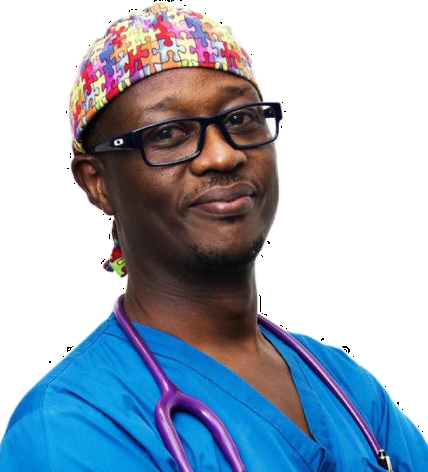Prof. Moses Galukande, an expert surgeon and Chair of the Department of Surgery at Makerere University’s College of Health Sciences is revolutionizing breast cancer research in Uganda. With a paucity of research studies on this cancer in Uganda, Galukande’s research is mounting evidence on breast cancer types, delays in diagnosis, risk factors and survival rates for women in Uganda. He knows from his own patients how tough it is on a personal level to battle breast cancer. Soon after completing two Master’s Degrees and a fellowship award, he worked in the breast unit of Mulago National Referral hospital and it’s here that he curved out his interest niche to research on breast cancer.
“I found the mortality associated with breast cancer unacceptably high. I was morally and professionally obliged to contribute to generating the evidence needed to positively impact on outcomes. At this point, I needed to develop high level competences, forge new networks in order to move the breast cancer fight to a new level. I decided to do a Ph.D.,”
the tenacious surgeon narrated.
STARTING OUT
In 2011, Galukande was awarded with a Ph.D. Fellowship by the Training Health Researchers into Vocational Excellence in East Africa (THRiVE) Consortium and for his thesis, he categorized breast
cancer into sub-types, explored risk factors and survival among Ugandan women. His research showed that there are four sub types of breast cancer and these are broadly categorized as aggressive and notso
aggressive types. The not-so-aggressive types are most common in the western world among non-Africans with 80% of those diagnosed with breast cancer bearing it.
However, majority of women in Uganda present with the aggressive types, which are characterized by rapid tumor growth. In exploring risk factors that predispose Ugandan women to breast cancer, Prof.
Galukande’s research established that delay in getting a diagnosis and limited access to treatment were largely responsible for poor outcomes.
“Additionally, women who have breastfed less or not at all and those with a first degree relative with breast cancer are at a higher risk of acquiring the cancer than those who have considerably breastfed and have no close relative with breast cancer in their lineage,” he said in an interview.
For delay to access diagnosis, he discovered that Ugandan women waited for 12 months to go to the right place for diagnosis. Moreover, 30% of those who made it the first time never returned owing to constraints of inadequate transport, delays in accessing diagnosis and treatment because of the huge number of patients. Uganda currently has about six mammogram machines (machines with special X-rays that detect breast cancer) and only two of these are in public health facilities. Galukande says that about eight million women are eligible for screening had we had the capacity to do so.
“A mammogram unit may screen up to 20 women daily working at full capacity. And yet, to access the same services in a private facility, one has to part with up to 150,000/- UGX,”
However, a mammography as we know it is not appropriate for women younger than 30 because the breasts are mostly ‘dense’ and making it hard to detect a lump off the printed off image. Dense breast tissue obstructs proper view of breast cancer signs on the images. Disturbingly, about 50% of women who are diagnosed with breast cancer in Uganda are below 40 years.

